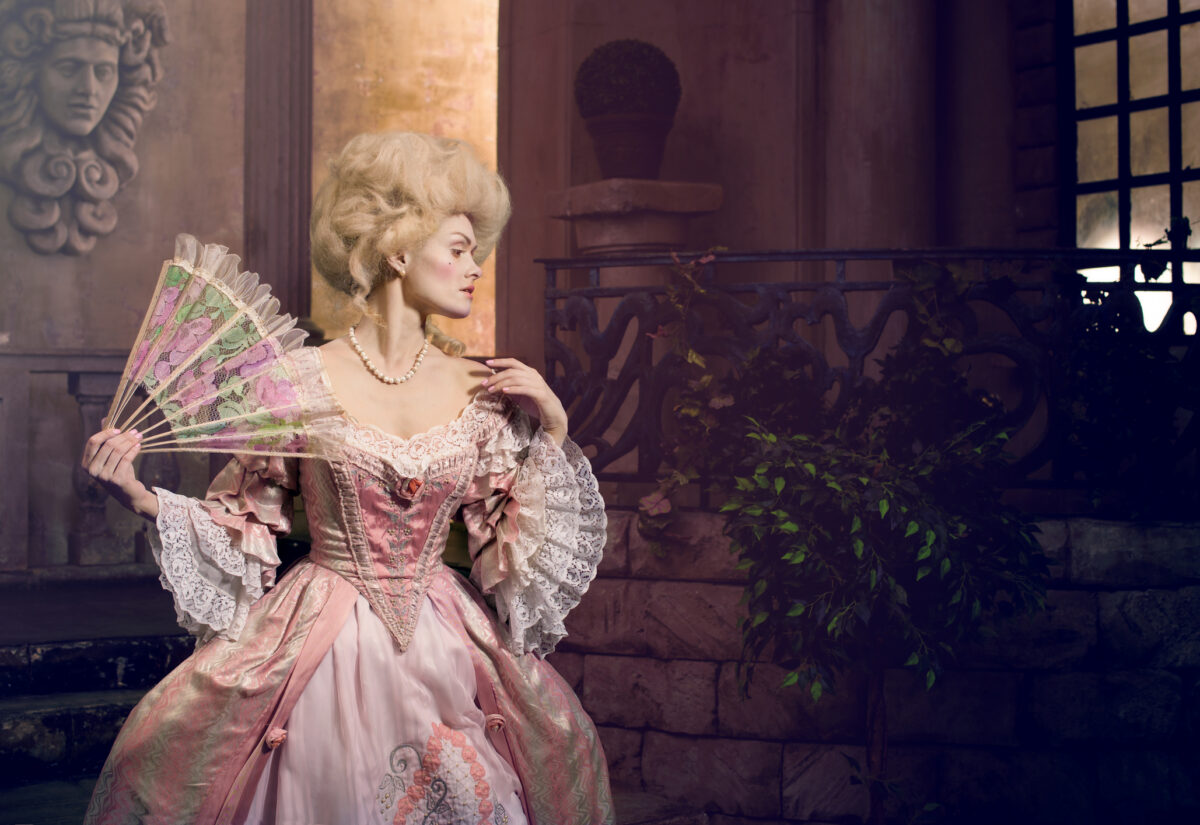 Getty Images/iStockphoto
Getty Images/iStockphotoThe Renaissance is remembered for its dazzling art, breakthroughs in science, and explosive philosophical ideas, but life at court during this period was far less refined than it might appear from oil paintings and poetry. Beneath the surface of powdered wigs, jewel-studded doublets, and courtly dances was a world ruled by rigid hierarchy, elaborate etiquette, and traditions that veered into the downright bizarre. In many royal households across Europe, customs that were once celebrated would now seem intrusive, cruel, unhygienic, or just completely unhinged. These Renaissance court rituals weren’t simply eccentric—they were central to power, loyalty, and influence. Here are some of the strangest courtly behaviours of the Renaissance era that would never go down today.
Public toileting as a mark of intimacy
In Renaissance France, particularly under the rule of Louis XIV, courtiers considered it an honour to be present during the king’s toilet. In fact, being invited to assist or observe while a monarch used the chamber pot was not only accepted—it was a coveted moment of closeness to power. These intimate, daily acts weren’t private; they were part of the ceremonial performance of monarchy. Being close to the monarch, even at their most vulnerable, showed favour and opened doors to influence. At times, multiple nobles jostled for the chance to hand over toilet paper or help with trousers, turning what should be a solitary act into a carefully choreographed dance of courtly hierarchy.
Elaborate and exhausting dressing ceremonies
Dressing royalty was less about fashion and more about protocol. In Versailles and other major courts, monarchs were dressed each morning in a ritual called the lever, with dozens of courtiers present to witness and assist. Who got to pass the shirt or tie a garter wasn’t random. It was strictly dictated by social rank. Being chosen to help dress a monarch was not only an honour, it was a political statement. These ceremonies could take hours, involved multiple attendants, and were as much theatre as they were function. What sounds like a frustrating way to start the day was actually one of the most strategic moments of the court calendar.
Bloodletting as routine maintenance
The belief in balancing the body’s humours dominated Renaissance medicine, and bloodletting was seen as key to good health. Monarchs and nobles alike submitted to regular bloodletting to stave off illness, relieve headaches, or simply because it was tradition. Physicians of the time claimed it balanced the body’s internal energies, and many rulers were routinely bled, sometimes to the point of severe weakness. These procedures were sometimes done publicly or with courtiers nearby, as part of normal daily activity. The idea that a ruler’s vitality could be maintained by literally draining them seems absurd now, but at the time it was endorsed by some of the era’s most respected doctors.
Banquets featuring live entertainment from animals and people
Renaissance feasts were not just about extravagant food—they were about spectacle. Banquets at courts like those of the Medici or the Valois could include everything from trained bears and monkeys to dwarf wrestling matches or contortionists. Deformities were often treated as curiosities, and people with physical differences were sometimes brought in for the amusement of guests. In some cases, elaborate plays or mock battles were staged mid-meal. Exotic animals were paraded for their rarity, and even live food preparation became part of the show. Modern audiences would view these performances as deeply exploitative and dehumanising, but in their time, they symbolised wealth, control, and a monarch’s ability to surprise and impress.
Poison testing on servants or animals
Poison was a very real fear in courts filled with rivalry and assassination plots. In Italian city-states like Florence and Venice, it wasn’t uncommon for rulers to employ tasters—or, more disturbingly, to test food and drinks on servants or animals before consuming it themselves. In extreme cases, food and medicine were administered to expendable test subjects to monitor effects. Even hired tasters lived precarious lives, often dying from their work. This paranoia bred a host of poisons and counterpoisons, with some nobles carrying antidotes or even microdoses of poison daily in the hope of building immunity.
Elaborate facial paint and poisonous cosmetics
The pale look was a must-have among the Renaissance elite, but achieving it involved daily exposure to toxic substances. Lead-based powders, mercury treatments, and vinegar concoctions were applied to the skin to produce a ghostly pallor. These cosmetics ate away at skin over time, caused scarring and hair loss, and in many cases, contributed to early death. Despite the visible damage they inflicted, these beauty standards persisted for centuries. Women often painted over lesions caused by the makeup itself, layering on even more lead. The result was a society literally dying to look fashionable.
The ritualised gift of a toothpick or napkin
Some gifts at court carried more meaning than they appeared to. In Spain and Italy, a monarch offering a hand-embroidered napkin, comb, or even a personalised toothpick could be a sign of deep favour. These small gestures were charged with political weight. Accepting such a token could spark jealousy, and giving one could signify a rise in status. In some cases, these objects were treated like relics, displayed prominently by the recipient. They were silent messages of loyalty, promise, or unspoken alliance.
Morning rituals that resembled theatre
The daily life of monarchs, especially in France, was so ritualised that waking up became a form of court entertainment. During the lever, nobles would crowd the royal bedroom not just to serve but to observe, making small talk, gossiping, or petitioning the monarch as he washed or dressed. Attending these routines was a marker of status. Being excluded meant falling out of favour. These rituals blurred the line between intimacy and surveillance, turning personal space into public property. It wasn’t unusual for nobles to wait hours simply for the chance to be seen at the bedside.
Obsessive astrology and birth charts
Astrologers held prestigious roles in Renaissance courts, often advising monarchs on war, marriage, and domestic policy. Courts would consult the stars before major decisions, and birth charts for royal infants were analysed in detail. Even educated rulers like Elizabeth I and Catherine de’ Medici were known to rely heavily on astrological predictions. Court astrologers could gain (or lose!) favour quickly depending on the accuracy of their forecasts. In times of political tension or plague, the stars were turned to for reassurance and legitimacy.
Ceremonial bed-sharing for diplomatic visits
In what now seems uncomfortably intimate, rulers occasionally shared beds with visiting dignitaries—not as a romantic gesture, but as a demonstration of trust and bonding. Sharing a bed was seen as a space for private conversation, political negotiation, or cementing alliances. Even powerful enemies might symbolically share sleeping quarters to show a truce had been achieved. These arrangements had strict etiquette, and the act was often witnessed or documented to confirm its significance. While not necessarily sexual, the modern understanding of personal boundaries makes this one of the more surreal practices of the era.



